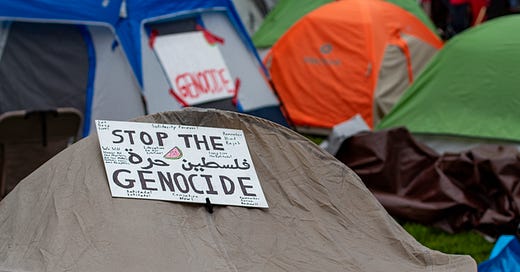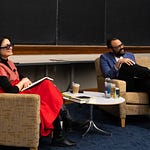Ken Stern (Director of the Bard Center for the Study of Hate) joins Amna and Jeff to discuss these urgent questions: Are campuses hotbeds of antisemitism? How do we define antisemitism in the first place? Is there a difference between antisemitism and anti-Zionism? How have colleges handled the student protests around Gaza? Why are so many higher education institutions facing Title VI lawsuits? What counts as a “hostile” campus environment? How should we educate students about the Israel/Palestine conflict?
Show Notes
International Holocaust Remembrance Alliance Working Definition of Antisemitism
Kenneth Marcus, director of the Brandeis Center for Human Rights Under Law, explains why universities and colleges should adopt the IHRA definition
Ken Stern, bio (Bard; Wikipedia); see also this New Yorker profile
Stern, The Conflict over the Conflict: The Israel/Palestine Campus Debate (University of Toronto Press, 2020)
Bard College Center for the Study of Hate
On quotas for Jewish students in higher education, see Jerome Karabel, The Chosen: The Hidden History of Admission and Exclusion at Harvard, Yale, and Princeton
Stern complements Wesleyan President Michael Roth for how he handled student protests—see Roth’s New York Times op-ed from the fall of 2024, “I’m a College President, and I Hope My Campus Is Even More Political This Year”
Here is the poll that Stern mentions about how Jewish and Muslim students understand the phrase “from the river to the sea”
full text of the 1964 Civil Rights Act, including Title VI
2004 “Dear Colleague” Letter on Title VI and Title IX Religious Discrimination in Schools and Colleges from the Office of Civil Rights
On how the Office of Civil Rights currently defines a “hostile environment,” see this 2023 “Dear Colleague” Letter on Shared Ancestry
Donald J. Trump, Executive Order on Combating Anti-Semitism, December 11, 2019
Here is the op-ed where Jared Kushner declares that “Anti-Zionism is anti-Semitism”: “President Trump Is Defending Jewish Students,” New York Times, December 11, 2019
Donald J. Trump, Executive Order on Additional Measures to Combat Anti-Semitism, January 29, 2025. See also this White House “Fact Sheet” and Len Gutkin’s dispatch on the E.O. in the Chronicle of Higher Education
The U.S. Department of Education maintains a list of pending Title VI cases here
Crimson coverage of Harvard’s decision to adopt the IHRA definition available here and here
on publishing Mein Kampf in Germany in 2016 for the first time since World War II, see coverage in the Guardian here and here
On how Whitefish, Montana responded to a proposed march by white supremacists in 2016/17, see this New York Times article, “How a Small Town Silenced a Neo-Nazi Hate Campaign”
We have written several pieces on student activism and the War in Gaza—see:
The Chronicle of Higher Education has had some great coverage of the debates surrounding the IHRA definition; see here, here and here
on “hate speech” laws, see Nadine Strossen’s superb 2018 book, HATE: Why We Should Resist it With Free Speech, Not Censorship
On the perils of confusing criticism of a government with attacks against a particular nationality, ethnicity or race, see this Chronicle Review piece about the censorship of a Chinese artist at George Washington University in 2022
For a data-driven analysis of the state of antisemitism in the U.S. on campuses and beyond, see this piece by Stony Brook University sociologist Musa al-Gharbi















Share this post